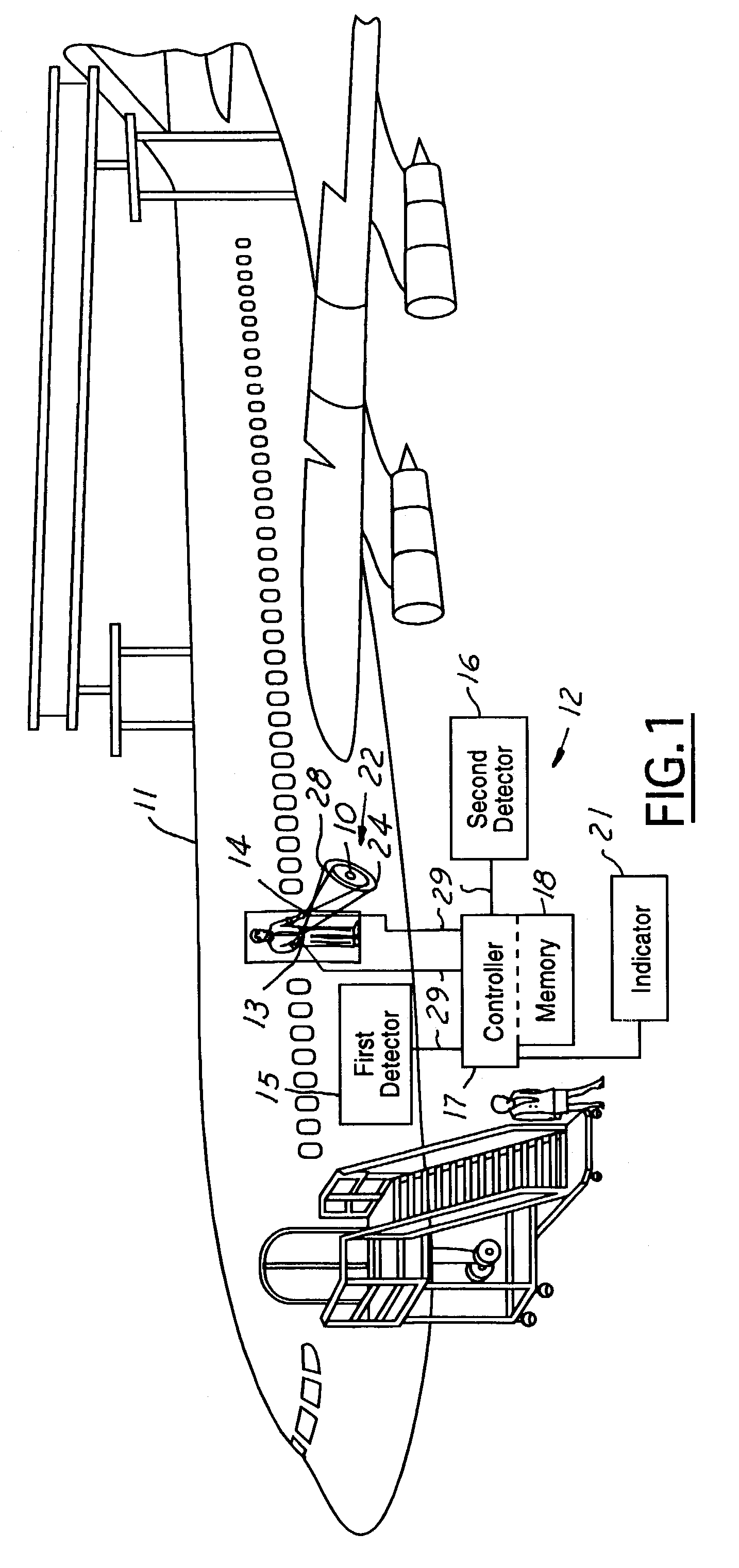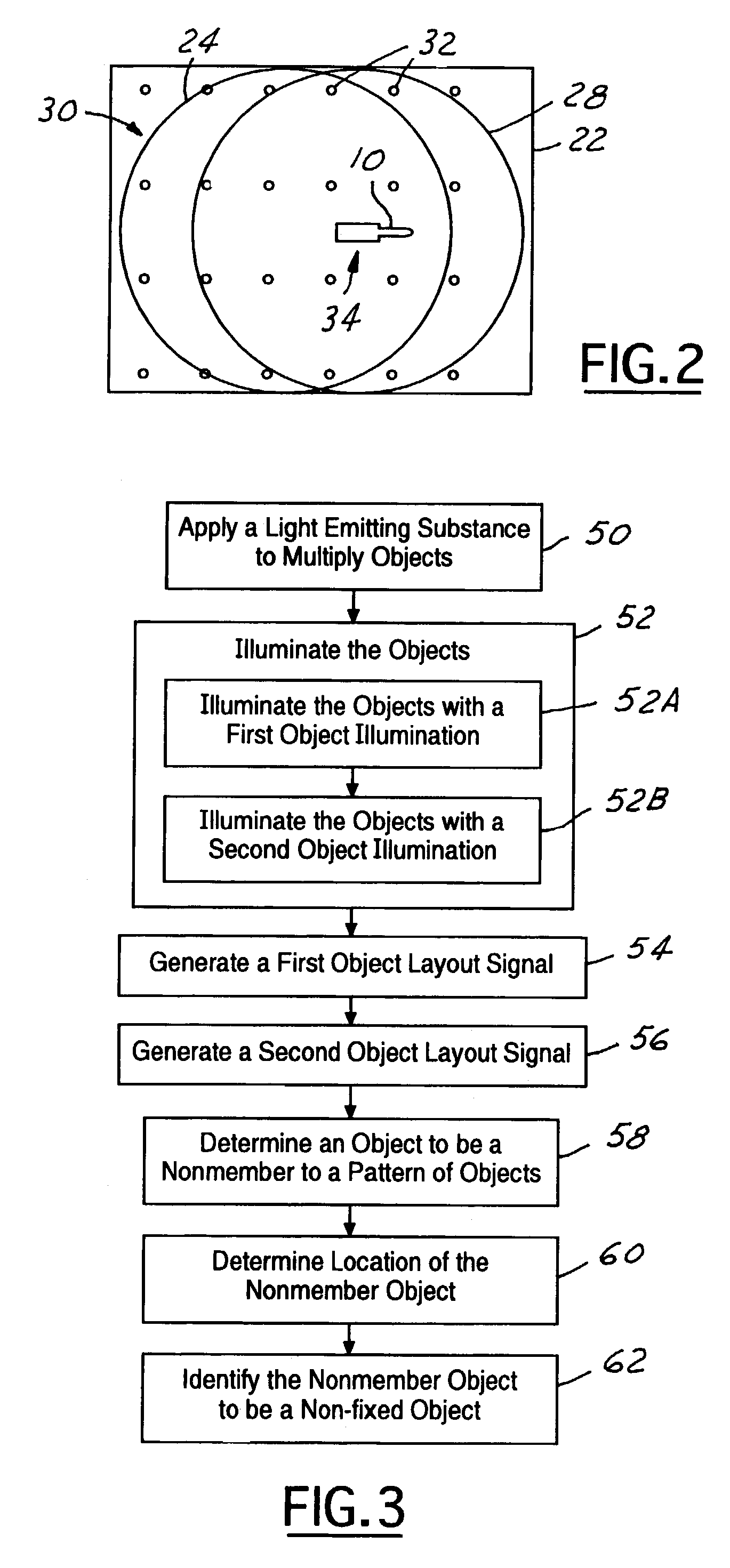Pattern method and system for detecting foreign object debris
a technology for foreign objects and patterns, applied in the field of object detection methods, can solve the problems of difficult detection of fod, human error, and decrease in the safety of the aircraft, and achieve the effects of reducing the amount of average power consumed, reducing eyestrain, and reducing potential generation
- Summary
- Abstract
- Description
- Claims
- Application Information
AI Technical Summary
Benefits of technology
Problems solved by technology
Method used
Image
Examples
Embodiment Construction
[0020]While the present invention is described with respect to a method and system for detecting non-fixed objects within an aircraft, the present invention may be adapted to be used for a variety of other components and systems including automotive vehicles, electronic or mechanical systems, machinery, or other components or systems that may require detection of a non-fixed object. The present invention may also be used in various production and manufacturing processes including before, during, and after assembly of a system. The present invention may also be applied in various types of inspection, such as in dye penetrant inspection of raw materials. In the following description, various operating parameters and components are described for one constructed embodiment. These specific parameters and components are included as examples and are not meant to be limiting.
[0021]Referring now to FIG. 1, a representative illustration of implementing a method of detecting a non-fixed object...
PUM
| Property | Measurement | Unit |
|---|---|---|
| wavelength | aaaaa | aaaaa |
| fluorescence wavelengths | aaaaa | aaaaa |
| absorption frequency range | aaaaa | aaaaa |
Abstract
Description
Claims
Application Information
 Login to View More
Login to View More - R&D
- Intellectual Property
- Life Sciences
- Materials
- Tech Scout
- Unparalleled Data Quality
- Higher Quality Content
- 60% Fewer Hallucinations
Browse by: Latest US Patents, China's latest patents, Technical Efficacy Thesaurus, Application Domain, Technology Topic, Popular Technical Reports.
© 2025 PatSnap. All rights reserved.Legal|Privacy policy|Modern Slavery Act Transparency Statement|Sitemap|About US| Contact US: help@patsnap.com



